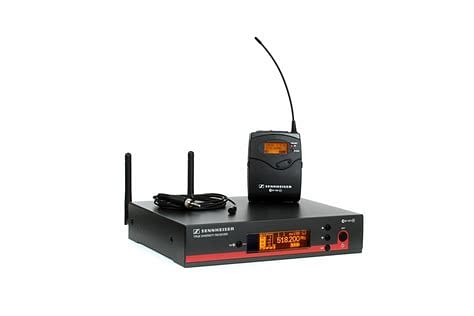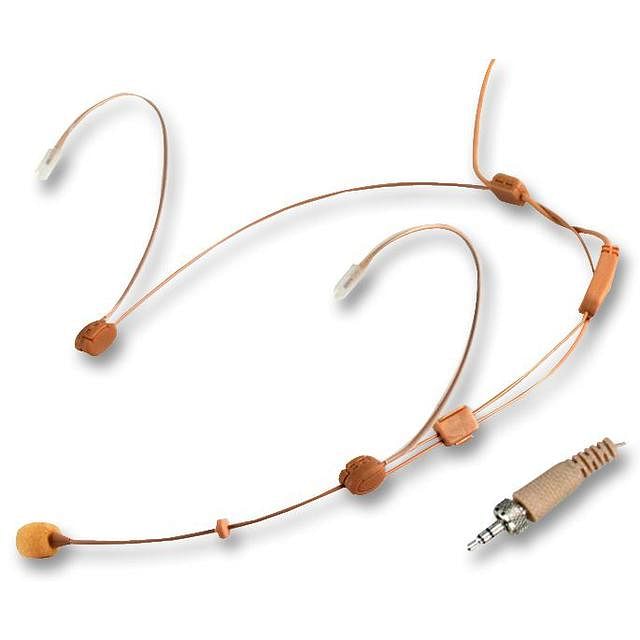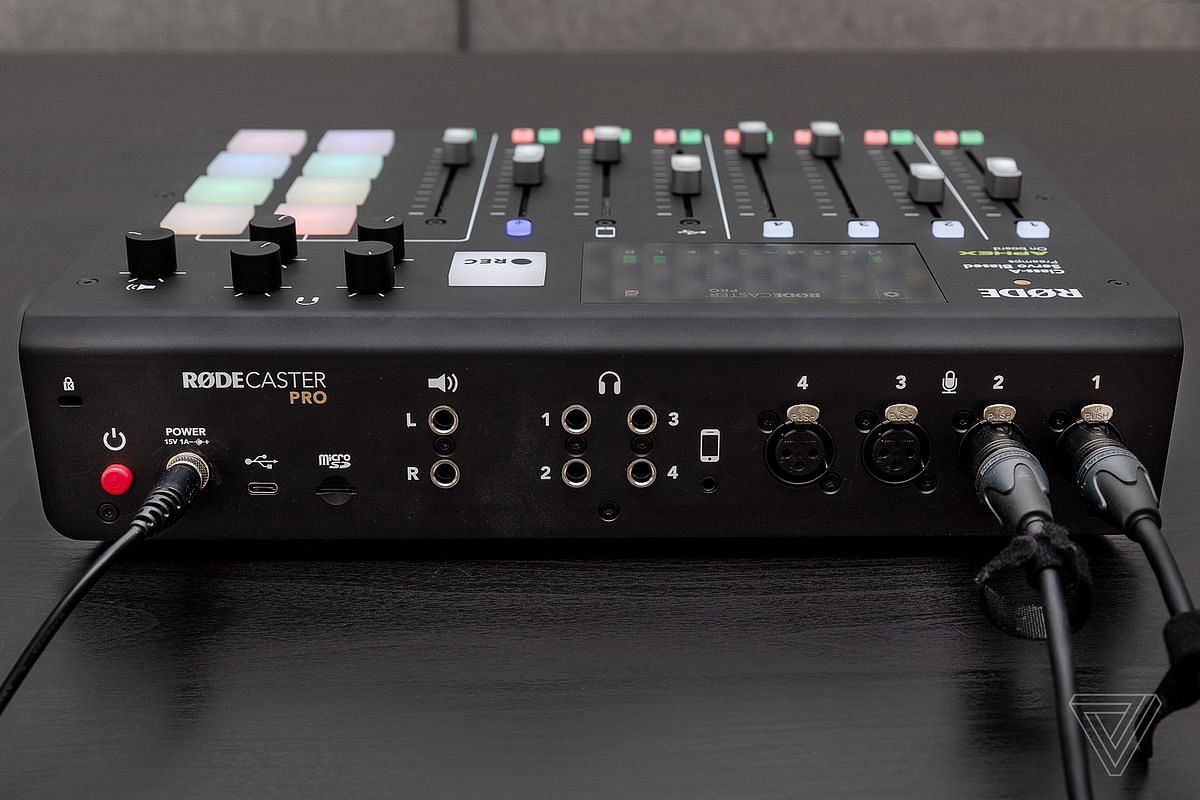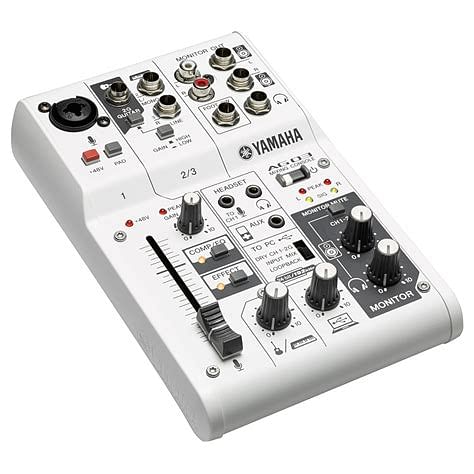Sound Advice
By Mark James - Saturday, April 17, 2021
Five years ago I decided I wanted to be a magician. That’s a strange thing to say, considering that I’d been making my living as one for over a decade at the time.
There are two schools of thought when it comes to blending comedy and magic. You can be a magician who is funny, or a comedian who does tricks. There’s plenty of praise & criticism leveled at both elsewhere so let’s move on and just talk about the logistic differences and how they might affect your choice of microphone.
Earlier on in my career I wanted to be funny more than anything. I chose material based solely on how many jokes I could squeeze into a routine and sacrificed the strength of my magic by stepping all over it with jokes and shoe-horned levity.
I didn’t really notice magic until I was almost 19, my performance heroes at that time were all comedians, so the classic ‘microphone in a stand’ was the only option. I started performing before big-name comedians used head microphones, they were mainly reserved for actors, musical theatre performers and Madonna.
These days many comedians use them, the most notable being Michael McIntrye. Had this been the case when I was younger I may have gone a different way. The epitome of a stand up comedian was always a microphone in a stand next to a stool, usually with a drink on it. I wanted to look like a comedian, so that’s what I chose.
The Mic Stand
My friend Wayne Dobson told me that he thought being able to use and negotiate a mic stand was the sign of a classy performer. I took this to heart and I focused on it.
I worked all of my routines around it and used one when rehearsing so as not to be surprised by its presence at shows. If you’re not used to them, they can get in the way when they’re in front of you and render you silent when they’re not.
I took my own stand to gigs to cut down on the variable of getting an awkward or bad stand. Some have legs, others a round base. Some bend, some don’t.
I tried as much as I could to leave the mic in the stand, so I wasn’t pacing around too often. Before this I’d charge around like Lee Evans. My nervous energy creating a one man tennis match.
All of these things are solid tips and worth taking into account if you do want to use a mic in a stand and you’re free to try them.
Have your prop case close by and you’re good to go.
EXTRA TIP: There’s nothing worse than delivering your opening line into a switched off microphone. So have the person introducing you use the microphone that you’re about to, then at least you know it’s working.
Something Changed
I got hired for a week of shows at The Magic Castle in Hollywood. I performed 21 shows over 7 days in a room that seated 56 people. This meant I didn’t need to use a microphone. In that week I found a new freedom in my performance I’d never had before. I was able to cover certain magical moments with a funny line or gesture that wasn’t impeded by the stand. Now, rather than being occasionally contrary to the magic, I was able to use comedy to enhance it.
A funny line could create the perfect misdirection for a move and my new ability to talk without worry about moving away from the mic meant there was no dead time.
N.B. If you are a beginner I’d suggest that some of this advice may not be for you. Learning that you cannot talk in every single second of a performance is a good thing. Having to inject pauses and space because of restrictions like a microphone will absolutely make you a better performer. It’s vital to learn that the spaces between the lines are equally as important as the lines themselves. Without them, a performance becomes a mess.
Having spent twelve years with those limitations and firmly believing that ‘you have to go there to come back’ I now have the best of both worlds. Having been forced to learn about spacing I can now play with that freedom in a way that’s not indulgent and hopefully use my voice in a way that’s sparing without being held back.
If you hadn’t guessed already, I’m now using the head mic permanently.
Which System?
I would highly recommend the Sennheisser EW 112 G3 GB Wireless Lavalier Microphone System. (It requires a license which is only £80 per year. The place you buy it will be able to point you in the right direction but if I was being honest, I’d tell you most people don’t bother).

You can get many low-cost mics, I use something like this:
 {
{
The microphone system is around £400 and the headset another £40.
I chose the Sennheisser brand specifically because (in the UK) it’s pretty much the industry standard for wireless microphone. Wired mics are more popular from Shure. Almost every wireless mic I’ve ever been given to use was a Senheiser.
When you buy one you basically get two separate things:
- The receiver - which plugs into the sound desk.
- The mic pack sender - which you have on you and allows you to plug in the headset.
Batteries
I’m only on stage for 45 minutes per night. I’ll usually get 6 gigs out of one pair of batteries without worry. You can get 30 AA batteries for £10 on eBay, that’s 15 battery changes. As I’m getting 6 shows per change that means you can do 90 gigs for £10. Nothing to worry about there.
Virtual Show Audio
Now we get to the reason for my having revisited this blog and updating it for Vanishing Inc. In the last year, the only performing opportunity most of us have had is in the virtual space. Performing shows via the internet for audiences that are often half-way across the world brings a new set of challenges. The only two things that are absolutely essential for a performance to have a chance at success are that the audience can both see and hear you. As this blog is about microphones I’ll only be covering the audio aspect.
The good news is that microphone I use and recommend for virtual shows is the same one I mention above. The only issue you must overcome is in connecting it to your computer. Typically you plug the microphone into the sound desk which in turn feeds the sound into some speakers. In the virtual world, you need same set-up but the sound desk is now going to push your sound into the computer rather than a set of speakers.
The easiest way I’ve found to do this is by using a RØDECASTER, it’s a professional sound desk made by RØDE and is intended for recording podcasts. Its computer connectivity is so intuitive as to be almost automatic. It also offers a self-contained method for storing music inside of the desk itself. The coloured pads on the desk can trigger songs and sound effects with minimal effort.

These retail at around £500 and may be a tad overkill if you don’t intend to podcast too. That said, If you call a professional sound equipment retailer (Gear4Music is my number one place), they’ll be able to recommend alternatives for around £100. With the correct sound desk, you’ll have a 100% reliable audio solution for your virtual shows.

The Yamaha AG03 Hybrid is a great choice. Once you connect this device to your computer, you’ll be able to plug in microphones, iPods and all manner of music systems.
Removing the need to have the sound play from your computer greatly reduces the stress on your processor and helps keep things running smoothly. It also allows you a manual tactile method of altering the volume levels without having to click between windows on your computer screen.
Conclusions
Obviously this advice won’t work for everyone. Art is subjective and style is personal. Even if you are going to buy and use a head mic, it won’t do you any harm to know which of your routines work just as well with a stand microphone.
There’ll be times where this is unavoidable and so it’s best to be prepared.
This blog has been about the technical aspects of the choice between head mic and stand mic, it’s also about the artistic choice between them. Knowing what you are and having a sense of character is vital to success.
Knowing who you are is a long process that takes years to understand and refine. If you’re a comedy magician, a huge part of that can be knowing if you’re a comedian who does tricks or a magician that’s funny. This knowledge can inform everything from the socks you wear to the microphone you choose. I decided to stop being a comedian who does magic to be a magician who was funny. Oddly, I’m getting more laughs now than ever.
Good luck
Mark James joined us for our virtual magic convention, Connected: Live. You can get his lecture and show here.
Back to blog homepage
Similar posts on the blog:
